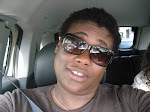
I haven’t rushed out to see a Denzel Washington movie since “Malcolm X.” And after splashing my way through a rare Southern California rainstorm, I’m feeling like I could have stayed at home!
"Book of Eli" opens on a post-apocalyptic world where a war has torn a hole in the sky and the sun has burned everything and everyone. Those who survived live in a world of scarcity and violence. Our reluctant hero, Eli, has been on a 30-year journey to bring the only surviving copy of the King James Bible to a safe harbor in the “west.”
On the surface a good plot, but the execution is disappointing. Which is too bad because the first five minutes of the film screams potential. The tone, and what is at stake, is immediately apparent, and Denzel does “alone” well. His is more believable and accessible than Will Smith’s glossy, tricked out version in "I Am Legend"
It is quickly established that Eli is resourceful, spiritual, and apparently invincible. His body might be riddled with scars, but he is still standing and walking toward his destiny. He is a man who carries everything he owns in a backpack and has no problem leaving things behind, well, except for his iPod, and of course the holy grail that he has been protecting for three decades.
Because most film-goers have seen at least one post-apocalyptic story the filmmakers could have done more to establish what is so unique about theirs. They touch on some items: you want to stay away from the people with the “shakes” (which doesn't pay off in any real way) and Anita Ward’s “Ring My Bell” is now considered classic listening music (definitely got a giggle from the audience). But for the most part there are no surprises. In fact, there is little that is memorable about this film. In fairness, Washington does a yeoman's job considering the story is so paper-thin. It is basically Eli shuffling, under green-gray skies, through the desert (New Mexico serves as the burned out world) and occasionally cutting off rapist, murderers and sun-goggled bandits random body parts.
Self-sufficient Eli’s mission is momentarily endangered when he walks into a town run by Gary Oldman’s “Carnegie”. Like our protagonist, Carnegie is from a time before the wars. He can read, which makes him powerful, and he also knows where the treasured water source is and of course he is not telling. Carnegie is also on a mission and is using every resource at his disposal to achieve it. I wont be giving away anything by saying he wants the Bible that Eli is carrying.
I’ve enjoyed Oldman’s performances in the past, but here he is just a caricature. I almost expected him to start twirling his “villain” mustache (which he didn’t have). The two female leads, Mila Kunis and Jennifer Beals, are basically props that get manhandled and yelled at for most of the movie. By the end of the film I can’t believe anyone is invested in Kunis’ “Solara” as a character or that she has what it takes to carry on Eli’s mission. There is simply no depth to these characters. No performance pops off the screen and demands that you watch. Many of their motivations appear to be internal and critical decisions (Beals sending her only daughter off with the machete wielding Eli) are made off screen, robbing the audience of the opportunity to care about anyone.
The Hughes Brothers,Albert and Allen, (Menace to Society, Dead Presidents) helm this picture. In what appears an attempt to take our attention away from the weak plot, they invest most of their energies into staging bloody fight scenes, massive explosions, and intricate camera work. Unfortunately, there is not enough in their bag of tricks to get our hearts pumping or save the movie from a less than impressive ending. The reveal is one that comes with little fanfare and left me feeling indifferent regarding the survival of mankind.
Others who have seen this film say that it left them thinking about how power and religion would play out in a society forced to start over. I think the people who were able to grasp that from this film were already inclined to see the connection. I offer that the filmmakers depended on a good number of their audience members already holding the belief that a bible could be the bedrock in restarting a society, and did none of the heavy lifting required in weaving a compelling tale.
Book of Eli was written by first-time screenwriter Gary Whitta (former PC Gamer editor) and produced by Washington. The film is rated R.










